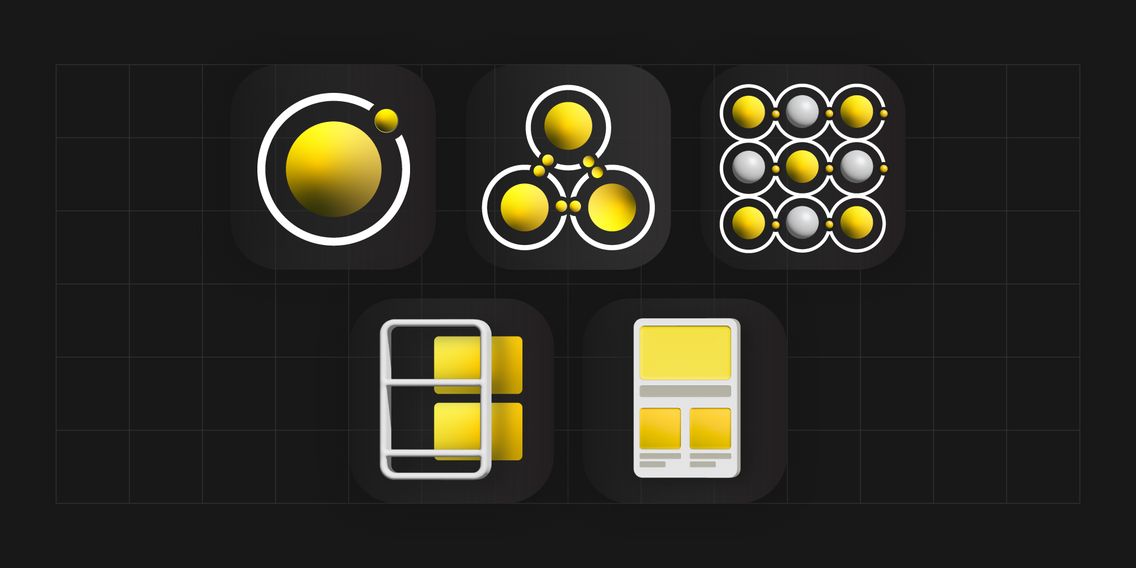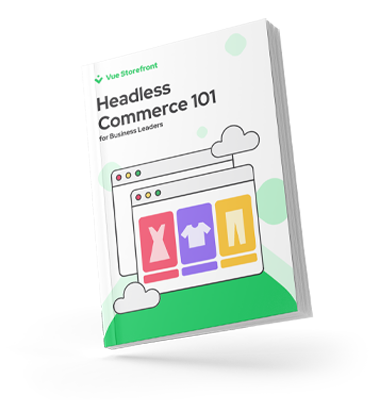5 min
October 23, 2025
Atomic Design – Ending the Inconsistency Syndrome in E-commerce
Many online stores suffer from a silent saboteur: the "inconsistency syndrome." Different button styles on the product page, a different font in the cart, variable form behavior—this visual and functional chaos immediately lowers user trust and has a direct impact on sales. The customer feels lost, which leads to the risk of cart abandonment.
The solution is Atomic Design (AD) — and it's not just about aesthetics. It is an engineering methodology created by Brad Frost aimed at building a complete Design System. It guarantees consistency and predictability at every level of the interface. Implementing AD introduces a design system based on logic, not randomness.
In this article, we will show how implementing AD directly reduces maintenance costs (TCO), accelerates the introduction of changes (ROI), and boosts conversion (UX). Get ready for a fundamental shift: it's time to abandon chaotic development and build a scalable frontend architecture that works for your profit.

Listen to the audio version of this article.
Fundamentals of Atomic Design – Let's Start with the Basics
The Atomic Design methodology transfers chemical terminology to the world of frontend design and development. According to its creator, Brad Frost, the interface is based on five logical levels that build the whole like Lego blocks:

1. Atoms:
The smallest, indivisible elements of the interface (e.g., a button, a form field, a color palette, a label, your company logo). These are the basic building blocks of the UI.

2. Molecules:
Simple groups of Atoms combined into a functional whole. An example is the search field, composed of a text input field (Atom) and a "Search" button (Atom).

3. Organisms:
Complex, functional sections of the interface. This includes, for example, the entire page header, which groups the search Molecule, the cart Molecule, and the navigation Molecule.

4. Templates:
Groups of Organisms arranged into page layouts. They show the skeleton of the page without the final content (so-called "mock content"), focusing on structure and context.

5. Pages:
The highest level. These are specific Templates filled with real content. Only at this stage do we test how the components and the entire architecture behave in real-world scenarios.

Thanks to this, while the initial component building phase requires time and precision, we gain fundamental reusability and consistency. A new feature is simply an assembly of ready-made Organisms, which radically increases project Scalability and ROI from development in the long run.

Josh Duck's Periodic Table of HTML – a perfect compilation of the basic atomic elements for web designers.
Technical Debt and TCO: The Myth of Cheap Components
Debunking the Myth: Having a Library is Not Enough
You have probably already heard the proud statement from your IT team: "We have a component library!" However, the problem arises when these components are copied, pasted, and modified outside of control in various projects. This is how Technical Debt is created—a hidden cost that accumulates with every inconsistent version of an element.
To simplify, you can think of it as taking out a "loan" on the code that will have to be repaid in the future through costly and time-consuming fixes.
The Value of Centralization and TCO Reduction
A Design System based on Atomic Design means that components are centralized. What does this entail? Namely, the smallest update to a single Atom (e.g., changing the color of the primary button) automatically updates all Molecules and Organisms across the entire system (B2C store, B2B panel, landing page). Sounds convenient? That’s the point!
So, how does Atomic Design affect your finances? It is a direct reduction of the Total Cost of Ownership (TCO):
It guarantees fewer errors during updates.
There is no need for tedious testing after every change.
It ensures significantly faster deployments, which benefits every developer.
It is safe to say that such a Design System is essentially insurance against unexpected maintenance costs.
Atomic Design and Conversion (UX): Trust and Fluidity
Trust is Currency in E-commerce, and the reality is that a consistent interface definitely inspires it. If your customer sees that the checkout page (a critical moment) suddenly looks different from the product page, the feeling of uncertainty increases. This uncertainty, in turn, easily translates into abandoning the purchase. User Experience (UX) is directly linked to sales psychology here.
The consistent placement and appearance of elements, such as identical icons or the same typography, create what is known as Cognitive Fluidity.
This means the user doesn't have to learn the interface from scratch every time—it becomes intuitive. This reduces effort and frustration and accelerates the purchase decision. This is a clear saving of time for the customer and a financial gain for you.
Atomic Design is the ideal solution for maximizing the conversion rate. Because components are ready, creating A/B testing variants (e.g., changing the color scheme of a CTA button, or a different placement of a form) is extremely fast, convenient, and cheap. This allows for quick achievement of ROI from UX optimization. Such modular agility is impossible to achieve in monolithic systems, which naturally leads us to the architecture of the future.
Role in Modern Headless E-commerce
The Ideal Headless Architecture Partner
Atomic Design and Headless architecture (e.g., Vue Storefront) are made for each other. The Design System components naturally form an independent Presentation Layer that communicates with any backend (Magento, Node.js) via API.
Cross-Team Collaboration and Business Scalability
The Design System becomes the single source of truth for designers and developers. No more misunderstandings and constant translation of vision into code.
The same set of Atoms can be used to build multiple interfaces (B2C store, B2B panel, mobile app). You achieve brand consistency across multiple platforms with minimal additional effort.
Summary
Atomic Design is an investment that stabilizes maintenance costs (lower TCO) and accelerates the introduction of innovations (higher ROI). Instead of fighting chaos, you gain predictability that translates into customer trust and hard sales data.
The Beecommerce team specializes in creating and implementing advanced Design Systems in Headless architectures. If your e-commerce suffers from the titular inconsistency syndrome, contact us, and we will organize your frontend and increase your conversion.




